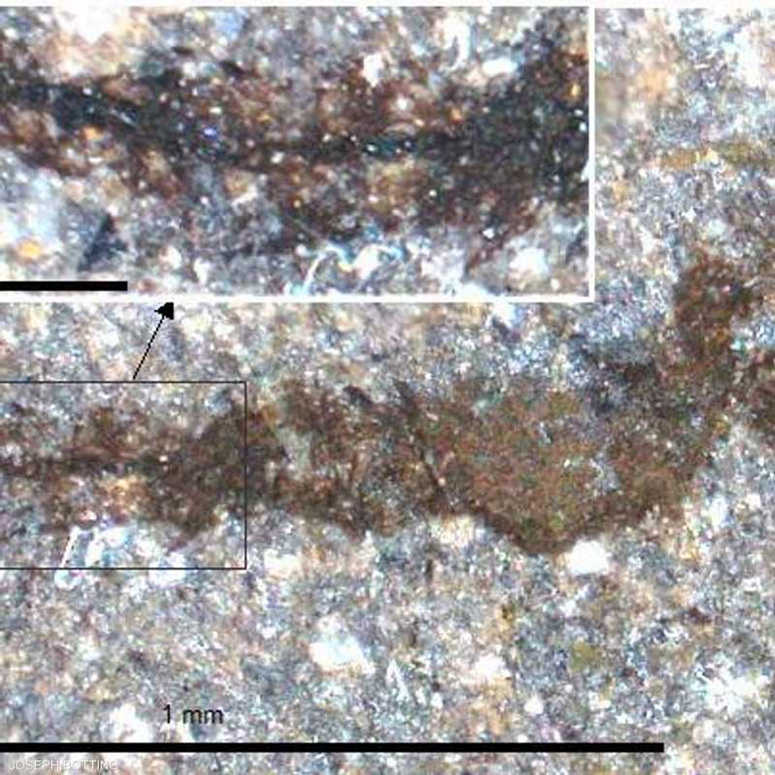A unique fossil site reveals details of life 462 million years ago

Fossilized worm at the site
Life at that time was devoid of people
The site provides a clear picture of the diversity of life in the distant past
A unique site in Wales some aspects of life on Earth revealed 462 million years ago, according to a CNN report.
The source explained that the matter is related to the "Castle Bank" excavation site near the Llandrindod Wells area of the Welsh county of Powys.

According to a research paper published in the journal Nature Ecology Evolution, the site is "distinguished because of the time period that reveals its details, and because the fossils found in it show soft tissues such as eyes, nerves, intestines, and the brain preserved in the mudstone."
The paper added, "It was a critical period in the planet's history , when there were no humans on Earth, but animals and algae were thriving in the seas," noting that the site "provides an integrated picture of the diversity of life in the distant past."
Study author Joseph Botting first discovered a sponge at the site in 2013, and has collected some similar fossils over the years, but has not conducted an in-depth study of the site.

In April 2020, thanks to the free time afforded by the fallout from the coronavirus , Botting returned to the excavation site near his home, and discovered new and exciting fossils.
"I didn't sleep that night," Joseph said. "Once you find this kind of soft tissue, you know anything can fossilize. So at that point we knew it was going to be important."
The fossils date back to a time period known as the Ordovician period, when the Earth was home to more diverse ecosystems.
Most of the 170 animals discovered so far from the fossil site were small (from 1 to 5 millimeters), and many were either completely soft-bodied when alive, or had tough skin.
According to CNN, the vast majority of these animals are completely unknown.
"There is no comparable site for the same time period. It is unique," said study co-author Lucy Muir.
Source : websites

